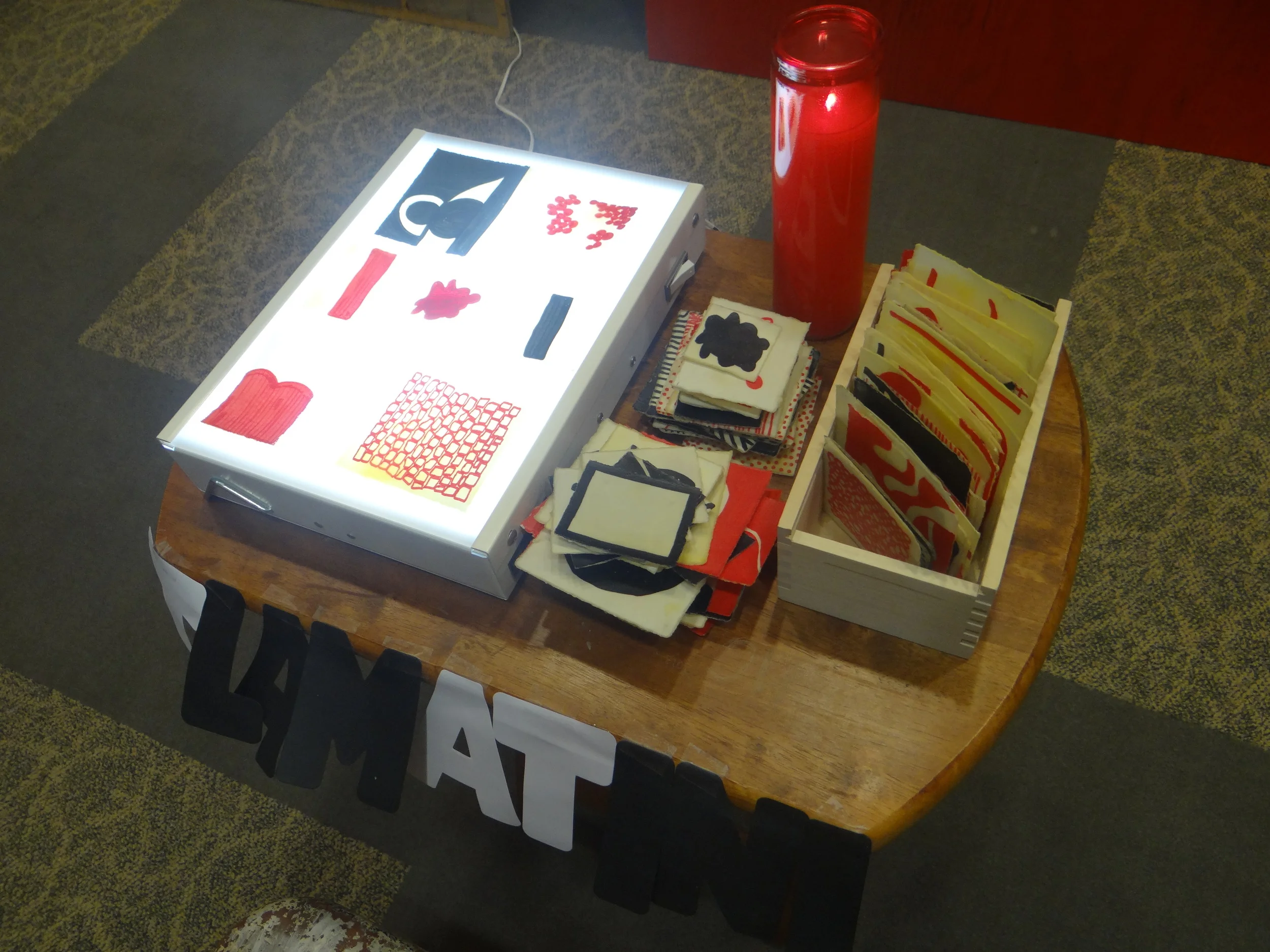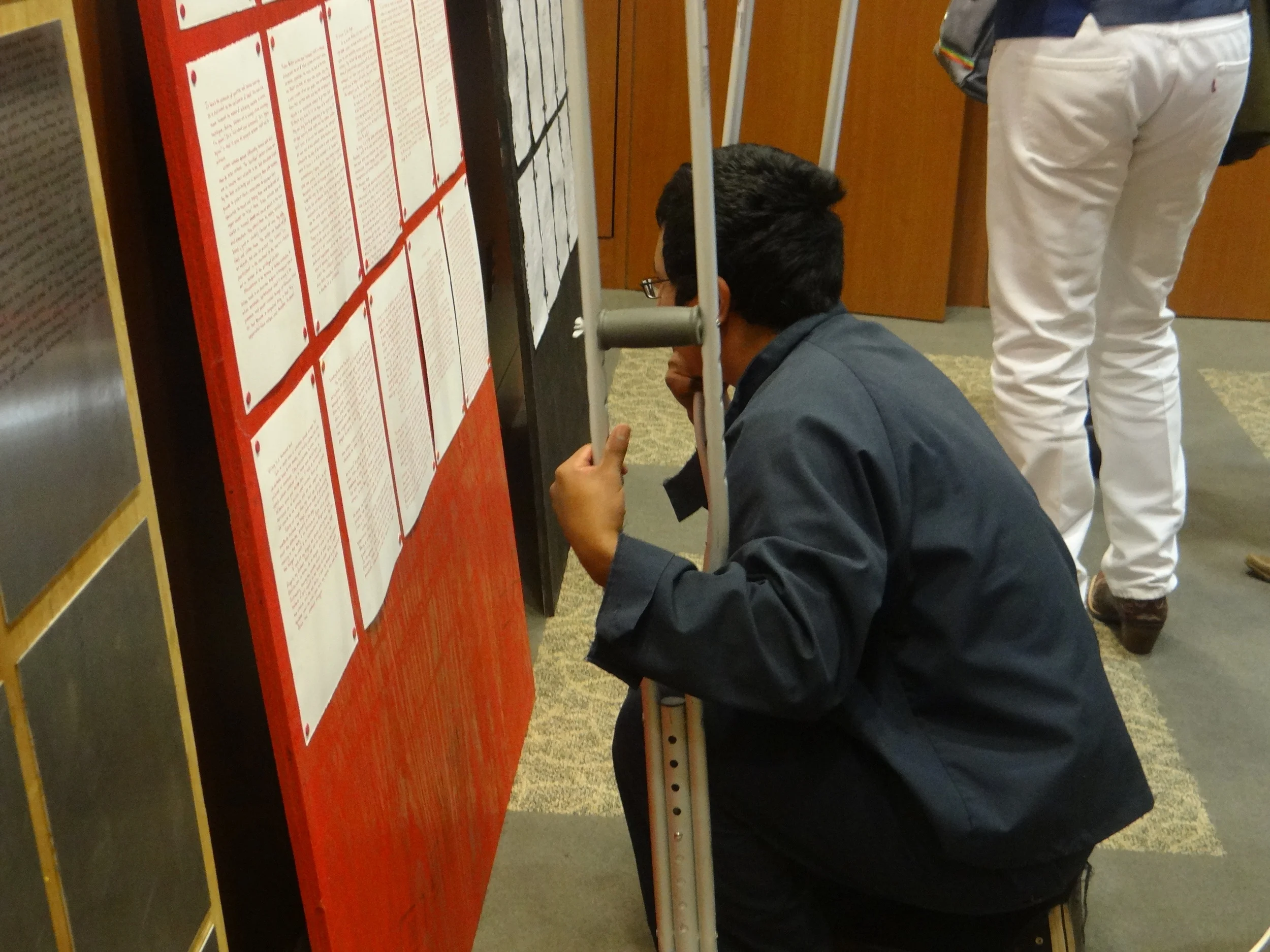












*assisted by Maya Cueva. All photography and video by Cueva.
“In tlilli, in tlapalli” is the Nahautl term signifying the red-and-black medium of the tlamatinime (the knowledge-producing class) in which their thought was recorded. Red-and-black figures explicitly in key essays by Donald Judd and Gloria Anzaldúa. Both evoke it in the context of indigenous Americans and the US Southwest as a territory. Judd cites the Hopi and Navajo and Anzaldúa “the shaman, [her] people,” understood as the Mexica. The pairing of red and black held spiritual, spatial, and visual significance for the indigenous, and consequently for Judd and Anzaldúa. Sandra Cisneros does not cite these indigenous traditions, but deploys “simple” colors (including red and black) to produce sensuality in her writing. She also shares a clear concern for reading the US Southwest against the grain of conventional histories and inhabitations alongside Judd and Anzaldúa.
This project territorializes the three notable figures’ bodies as Tejano/a. They are included based on three factors: their philosophical explorations and political-aesthetic deployments of “red and black”; their conceptual and physical rootedness in Texas; and the role of their writings in my own conditions of possibility. Judd, Anzaldúa, and Cisneros each produce(d) substantial bodies of text. I am also interested in the inscription of these texts onto/as physical presences (bodies) and the space this might produce if presented together.
One aim is that the co-presence of these three invokes a deterioration of borders between different aesthetic systems and their respective tribes who thrive in Texas: the art cognoscenti in whose cosmologies Judd is a central figure and the heavily overlapping worlds where Cisneros and Anzaldúa anchor different orbits. It is remarkable that these three reside(d) in Texas, located the region centrally in much of their thinking and creations, yet are frequently figured as alien to one another (Judd <--> Anzaldúa / Cisneros).
Finally, I am interested in the intergenerational transmission of knowledges. This interest is embodied in the act of hand-transcribing works by these thinkers and including “glyphs” of the artist’s own making into the work.
Transcribed writings – Hand-transcriptions of the writings in which the authors mention red and/or black are mounted on materials reflecting the practice or spirit of the author: spiral notebook paper for Cisneros; sheet aluminum for Judd; heavy unruled drawing paper for Anzaldúa.
Height-specific plywood mounts – Each writing is mounted in rows and columns on plywood sheets measuring 4 feet wide. The height of each of the three mounts will be determined by the height of the writer whose work it holds. Judd’s is 6’, Anzaldua’s 4’10”, and Cisneros’s 5’7.” These lean against the wall.
Color scheme - Each plywood is colored differently for each writer: Anzaldua is red; Judd is unpainted, bare plywood; Cisneros is black.
Beeswax-coated “glyphs” – Using black and red acrylic paint pens and heavy drawing paper, the artist produced hundreds of pairs of “glyphs” of dimensions varying between 1” x 1” and 4” x 4.” The drawings’ shapes are mostly iterations of amorphous forms found in a range of art, from pre-colombian to modernist (Olmecs to Cy Twombly) filtered through the artist’s imagination. Each drawing is coated in beeswax, giving them an enhanced object-ness and a skin-like coating.
Tejano/a storytelling table - A small table with a red candle and an 8.5 x 11” lightbox is set up facing the three plywood text/body figures. Viewers are invited to sit at the desk, taking the position of Tlacuilo-Tlamatine (glyph maker- interpreter) and configure their own red-and-black story as Tejanos in the presences of Judd, Anzaldúa, and Cisneros. Insofar as glyphs (Nahuatl among them) have an historically tense relationship with the alphabetic writing deployed by Judd, Cisneros, and Anzaldúa, they are present in this work as my negotiation of two conflicting desires: to establish visually the notion that my intellectual, alphabetic work is forever indebted to these three, and to refrain from displaying any written work that is not that of the three main subjects. Less conflicted, they also make possible the artist’s invitation for others to produce stories alongside him and with or against the three authors.

hand-transcribed, black Sharpie on sheet aluminum, plywood

selections from Cisneros's writing that mention "red," "black," or names of locations in Texas, hand-transcribed, black BIC ballpoint on torn out spiral notebook paper, plywood, black spray paint


dinner tray, die-cut letters, beeswax-coated glyphs, light table, candle